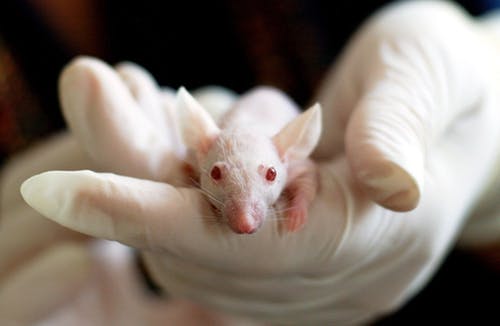Have you ever become anxious just from a smell and you don’t even know why? This following blog may help explain.
Emory University Study
Neuroscientists at Emory University a Leading Research University in Atlanta, Georgia conducted a series of captivating experiments. This research was also featured when I attended a talk with Neuroscientist Dr Hannah Critchlow recently. Hanna also references it in her book The Science of Fate.
Getting back to the experiments from Emory University. They taught male mice to fear the smell of cherry-blossom.
How they did this was by associating the smell of cherry-blossom with mild electric shocks. They sprayed the cherry-blossom scent & at the same time gave the mice tiny electric shocks to their feet.
They sent a mild electrical current though the bottom of their cage. Two weeks later these same mice bred with females who were not subjected to the tiny shocks or subjected to the cherry-blossom scent. There was also a control set of male mice who weren’t subjected to the shocks or cherry-blossom scent.
The pups of the control mice were indexed as to which pup was from a father who was subjected to the cherry-blossom scent & shocks and those who were not. The pups were then subjected to cherry-blossom scent and amazingly the pups from the fathers who were subjected to cherry-blossom scent and tiny foot shocks became anxious and fearful when the scent of cherry-blossom was introduced to their cage.

The Difference Between the 2 Sets of Mice
Those baby mice from fathers not subject to the cherry-blossom scent and mild foot shocks appeared to have no adverse reaction to the cherry-blossom scent. Further studies were carried out on the pups of the fathers who were subjected to the cherry-blossom scent and foot shocks and it was revealed that they actually had more cherry-blossom detecting neurons in their noses and actually had more brain space devoted to the detection of cherry-blossom scent.
The academics who were in charge of the research, Brian Dias and Dr. Kerry Ressler also astonishingly found that the second-generation pups were found to have characteristics of their fathers, even though they were never subjected to cherry-blossom scent or the mild electric shocks. They took the experiment one step further by using sperm from the original effected male mice and artificially inseminated female mice and they found the same characteristics in those offspring.
Further Evidence of Lab Rats Inheriting From Their Fathers
Neuroscientist Christopher Pierce also discovered though epigenetic inheritance that male rats whose fathers were exposed to cocaine ingested less of the drug than those whose fathers who never ingested cocaine. Pierce concluded that because cocaine is a toxin, the fathers passed down to their pups to avoid the cocaine, as it would help them survive and avoid the toxin associated with cocaine. In relation to the research that was carried out by Brian Dias and Dr. Kerry Ressler, Pierce stated, “It’s a compelling finding, the fact that epigenetic changes happen in mammals is amazing.”
Epigenetics a New Study In Science
Epigenetics is a relatively new form of science which can possibly explain how the offspring of these mice may fear the cherry-blossom scent. Whilst the science still has a long way to go before it can be applied to humans, researchers have found that children who were in their mothers’ womb during the 9/11 attacks were found to have lower levels on cortisol when born. What is interesting about this is that low levels of cortisol are a hallmark of Post-Traumatic Stress Disorder (PTSD).
It has been well documented that the events of 9/11 caused so much trauma to so many people. Consider all the people who witnessed the atrocities, the people who lost friends and family members, the first responders themselves and their family members and spouses that would have been exposed to secondary PTSD. It could be fair to say that there would possibly also be a low level of cortisol in the children of these people.

The Dutch Famine
There was a time in the Netherlands which has been called The Dutch Hunger Winter or The Dutch Famine.
This period started approximately November 1944 and lasted for approximately 6 months. The Netherlands at the time had been through 4 years of war and the winter of 1944-1945 was a particularly cold one. Due to the ongoing war the supply of food was dramatically affected and people were forced to eat grass and roots to survive. They were also forced to burn furniture just to survive the bitter cold.
It was reported that more than 20,000 people had died before the supply of food was restored in May of 1945.
Due to the health care and record keeping of the Dutch, the people who survived were unintentionally an excellent base for research due to the fact that they had all gone through a period of malnutrition at the same time and for the same approximate length of time. Woman who were pregnant during this time gave birth to children who were abnormally small. Considering what their mothers had gone through this does not appear to be astonishing in itself.
What is astonishing is that even after the babies were studied for 40 years after their birth, they continued to be small with almost no signs of obesity despite having an abundance of food. What is even more astonishing is that the physical traits of the children born after the famine were passed down to the next generation being the children of the children.
Summary
One of the things that the research has not concluded is how many generations can the epigenetic changes effect. Whilst not complete, this research is incredible, and we can’t wait for more research to be carried out in this field.
Be Great
David



Great Blog
Thanks Barry
David